

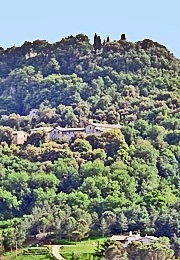
This hillside outside Orvieto was the site of the ancient monastery of San Gregorio de Sualtulo and subsequently of the Cistercian nunnery of San Bernardo, which served as the infirmary of the Abbazia di SS Severo e Martirio in the 16th century.
The Commune bought the ex-nunnery in 1551 for a community of Capuchin friars, who built the present church and convent. Numerous donations were recorded for this purpose in 1567, including one from Simoncello and Girolamo Simoncelli.
St Crispin of Viterbo lived here for forty six years (1702-48).
The community was suppressed and the complex was abandoned in 1866. The Capuchins managed to buy it back in 1897. This community merged with that at Bagnoregio in 1949, and the last friar left this convent in Orvieto in 1955. The complex then passed into private hands.
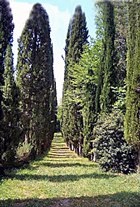
Lucio Urbani left the complex to the Opera del Duomo when he died in ca. 1970 but they initially took little interest in it, and it was once more abandoned. However, the Capuchins returned in 1987: the church was re-consecrated to St Crispin of Viterbo, who had been canonised in 1982.
Church
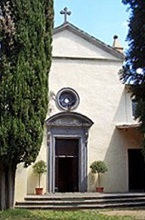
The interior is in the form of a barrel vault with a deep choir behind the altar and two chapels off the left wall.
Immaculate Virgin with saints [date ??]
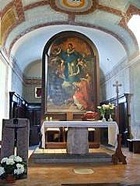
Annunciation (20th century)
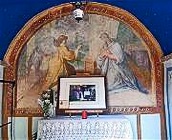
This fresco is in the Cappella Urbani, to the right of the church.
Read more:
This page from the site of the Capuchins in Lazio contains more detailed information.
Return to Monuments of Orvieto.
Return to Walk IV.

